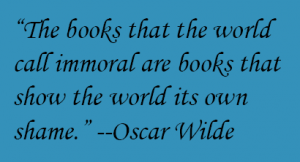Last week’s guest speaker was the Chief Executive of Publishing Scotland, Marion Sinclair. Publishing Scotland is a collective organisation with the purpose to ‘help Scottish publishers do business’. The group of founders were sick of travelling down to London for publishing meetings so they decided to do something about this. Soon after, Publishing Scotland was born in 1973 and has being going strong ever since.
Publishing Scotland have approximately 70 members and unusually survives almost entirely through state funding as opposed to subscriptions. They aim to work with smaller and Scottish publishers to help them network, grow and thrive in an industry that requires more man-power than is often affordable.
Going through the list of services on offer to their members, Marion paints the vivid picture of Publishing Scotland being an incredibly valuable resource for Scottish publishers who are facing difficulties that come with operating out of the London-centric hub of the industry. Services include (but are certainly not limited to) training courses, funding to help publishers attend book fairs outside the UK, networking events and marketing.
Marion spoke enthusiastically about the new publishing start-ups across the country and even encouraged us to think about potentially starting our own, noting that many successful publishing start-ups have been established by people in their twenties (and beyond of course!).
She discussed the 4 main challenges facing Scottish publishers and these are challenges that Publishing Scotland will work hard to face during the upcoming years. These are:
- Getting products out to an international market, which is something Marion assured us Publishing Scotland will be prioritising.
- Competition- it’s a crowded market! Visibility is everything and smaller publishers don’t get the same marketing space or opportunities as bigger publishing houses.
- Lack of digital expertise to navigate the ever-changing digital market.
- The ‘Lure of London’. Smaller, Scottish publishers are excellent at spotting talent and producing best-sellers, yet this success also invites interest from bigger publishers with more resources. This is sometimes a tempting offer for authors looking to further their career.
She concluded by discussing, with an energetic buzz, the increasing activity within Scottish publishing. With new start-ups, existing publishing houses starting to grow and more attention coming our way, she announced that it was an exciting time to get into the Scottish publishing industry. It’s a good thing more than half of us admitted we wanted to work in it!

























